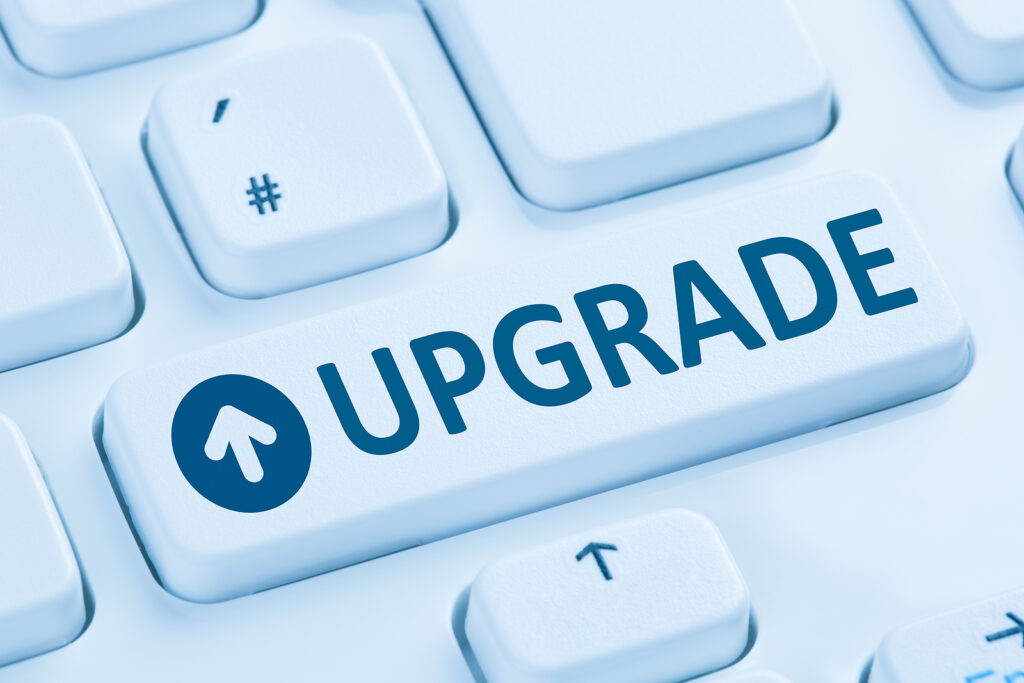As a New Jersey business owner, it’s imperative to keep your technology up-to-date to stay secure. However, it’s just as important to manage your budget carefully. Upgrading your business computers is not merely about keeping pace with the latest technology—it’s a strategic investment. We’ve put together this guide to help businesses through this process to ensure upgrades are both cost-effective and minimally disruptive. Let’s review 7 cost-saving steps your business should follow when considering upgrading your business computers.
1. Determine the Number of Computers To Be Replaced
The first step in upgrading is to evaluate which computers that need to be upgraded. By conducting a thorough assessment, you can start planning whether their replacements will best be made as an upfront, capital investment or one that will be spread out over a period of time. This targeted approach not only aligns with your company’s budget but also addresses strategic security concerns.
With Microsoft set to end support for Windows 10 in October 2025, systems running this operating system will no longer receive critical security updates. Upgrading computers to a supported operating system, in this case, Windows 11, is crucial not just for maintaining system security but also for complying with various regulatory standards.
2. Obtain Pricing for Hardware Replacement Cost
Navigating the hardware market can be daunting, with prices varying widely based on specs, brands, and suppliers. It’s essential to look beyond the price tag and consider the total cost of ownership, which includes factors like energy efficiency, warranty periods, and after-sales support. You want to ensure that you receive high-quality equipment that offers long-term value.
3. Decide on Purchase Strategy
The timing of your hardware purchases can significantly impact your cash flow. Immediate, large-scale purchases can strain budgets, whereas spreading out the expense over several months or quarters can be more manageable—a major aspect of business management. A managed service provider (MSP) like Jersey IT Group can assist in developing a purchasing strategy that fits your budget and operational needs.
4. Get a Complete Project Estimate from Your IT Company
Understanding the full scope and cost of an upgrade project is vital for budgeting and planning. This includes not only the hardware costs but also the expenses related to professional services such as configuration and installation. MSPs should provide you with detailed project estimates that encompass all aspects of the upgrade, including timelines for decommissioning old computers, transferring data, and deploying new systems. We also determine anticipated downtime and its potential impact on your operations. These comprehensive estimates ensure that there are no hidden costs and that you can plan effectively with no surprises later.
5. Consider the Time of Year for Scheduling the Upgrade
Choosing the right time for an upgrade can mitigate its impact on your business operations. For many businesses, there are peak times when every minute of system availability counts. Planning upgrades during slower periods can prevent significant disruptions and loss of revenue. Your MSP should understand the seasonal dynamics of many industries and can help schedule your technology upgrades during your least busy times, ensuring a smoother transition and better utilization of new systems when you need them most.
6. Generate a Technology Budget That Suits Your Company Financially
Effective technology budgeting is not just about cutting costs—it’s about allocating resources wisely to areas that yield the most significant benefits. A well-planned technology budget reflects your company’s strategic goals and includes provisions for upgrades, maintenance, and potential emergencies. Your IT company should collaborate with you to develop a technology budget that supports your business’s immediate needs and long-term growth, making sure your investments today foster a more robust technological infrastructure tomorrow.
7. Create an Installation Schedule with Minimal Business Impact
The final step is implementing your upgrade with minimal disruption to daily operations. Every minute of downtime can translate into lost revenue. Your Managed Service Provider should create detailed installation schedules that minimize downtime and consider the operational rhythms of your business. By coordinating closely with your team, it will help make the installation process seamless, keeping your business running smoothly without significant interruptions.
Choose Jersey IT Group
Are you ready to boost your business security and enhance efficiency with upgraded computers? At Jersey IT Group, we specialize in helping New Jersey businesses streamline their technology upgrades economically and efficiently. Reach out to us today to discuss how we can support your business’s IT needs with our custom solutions.





